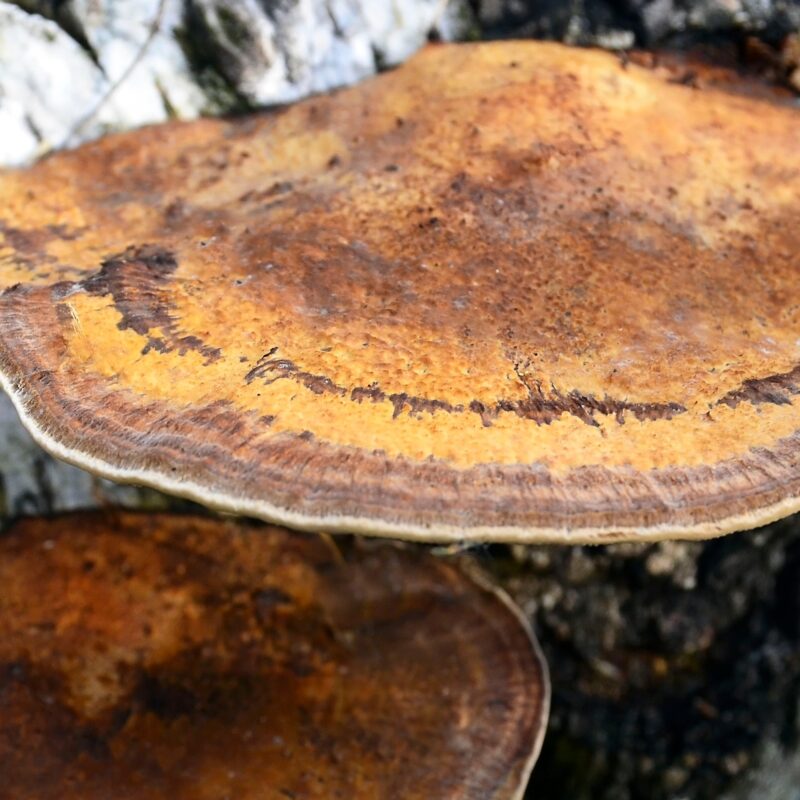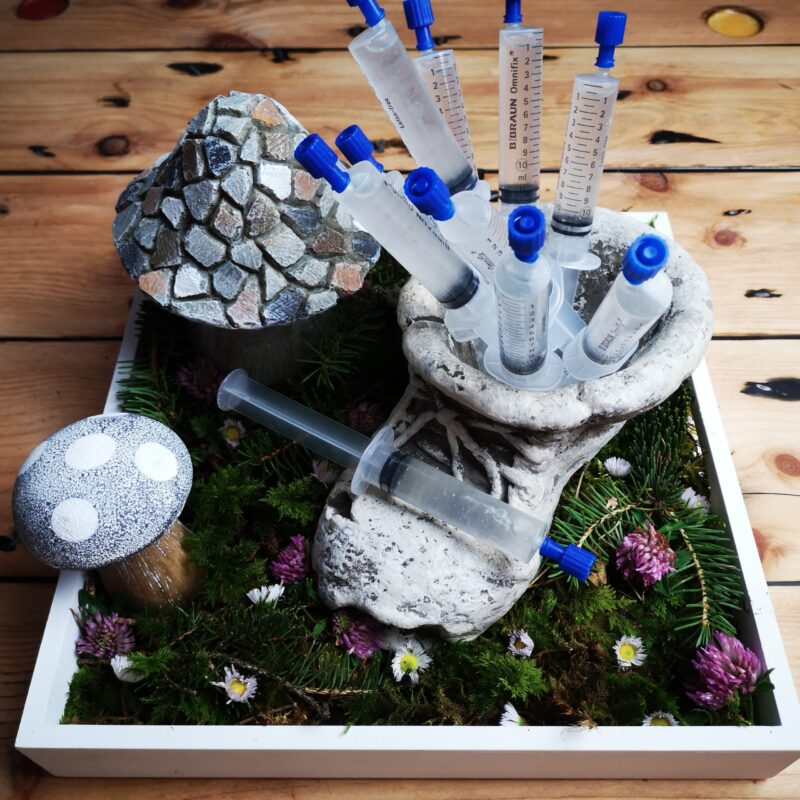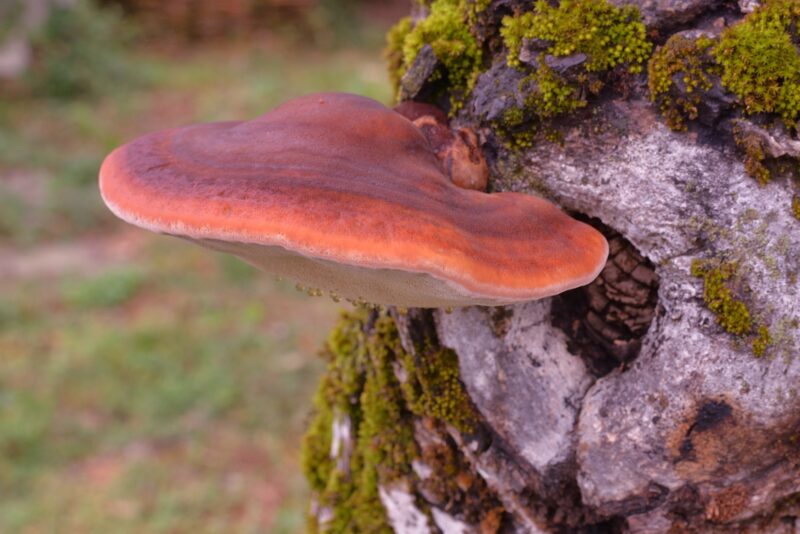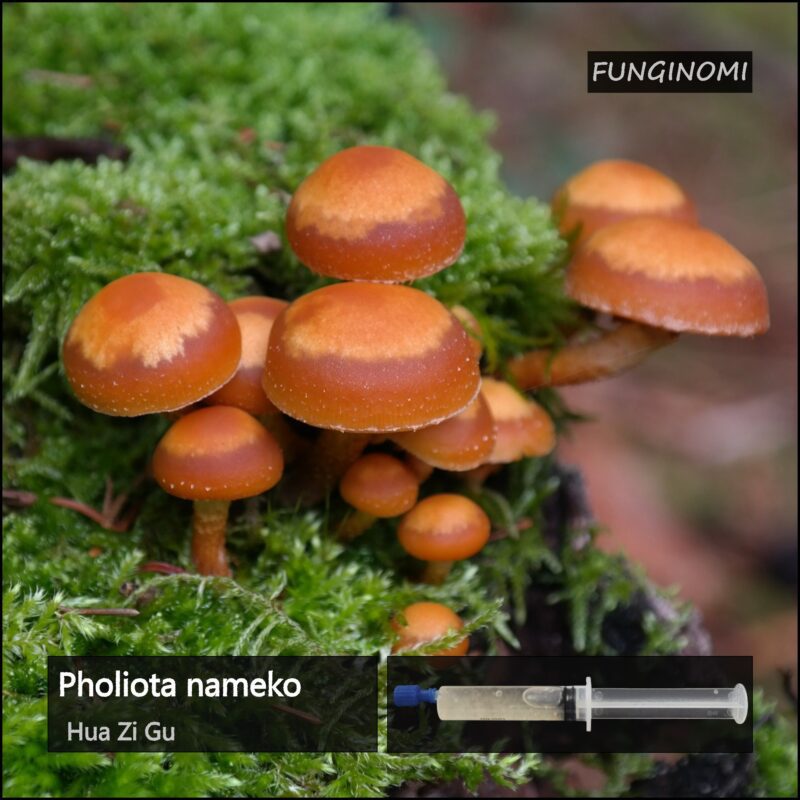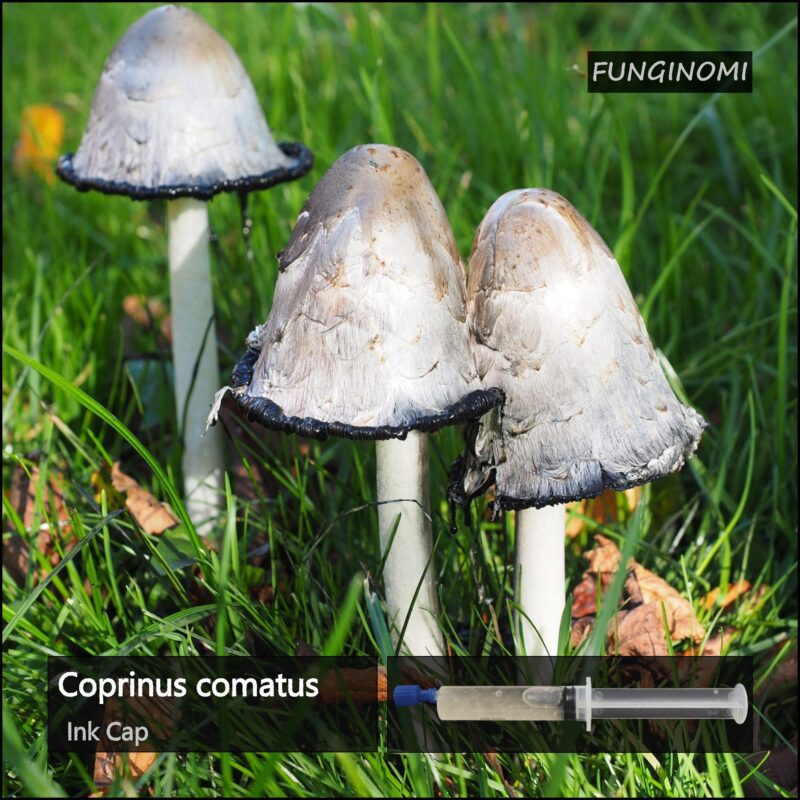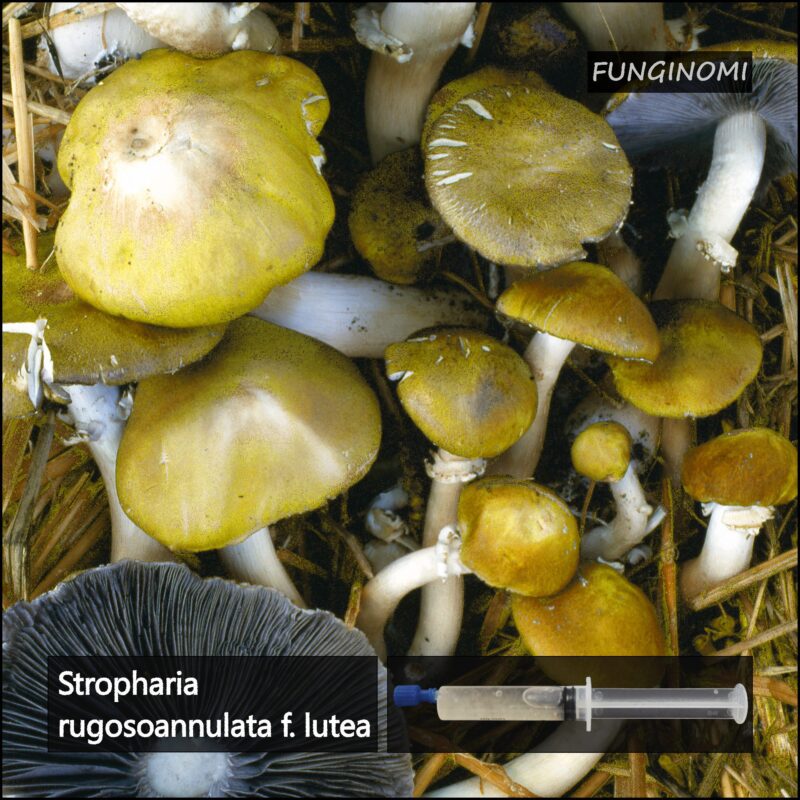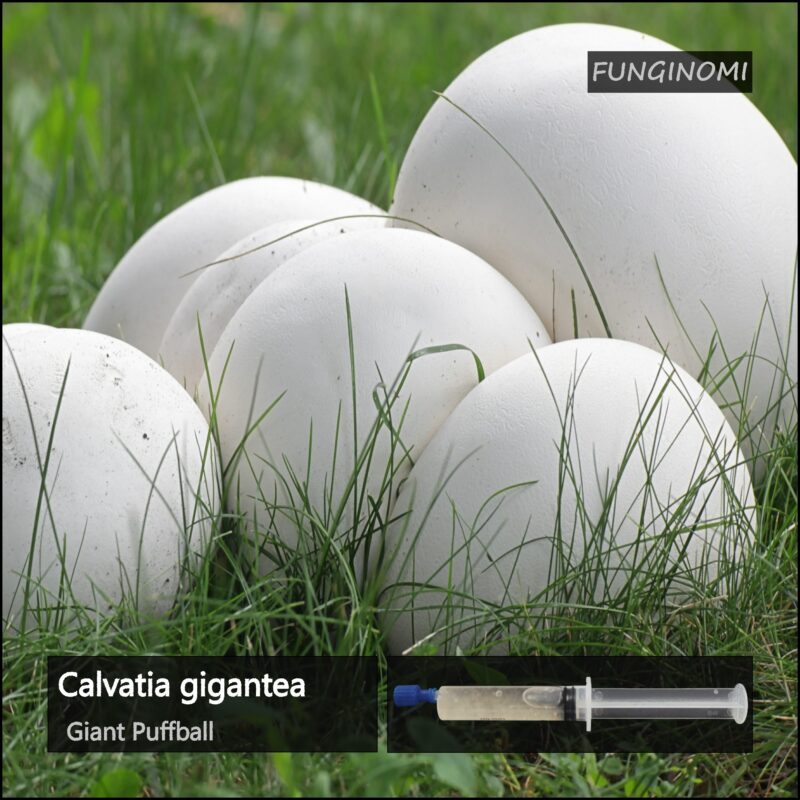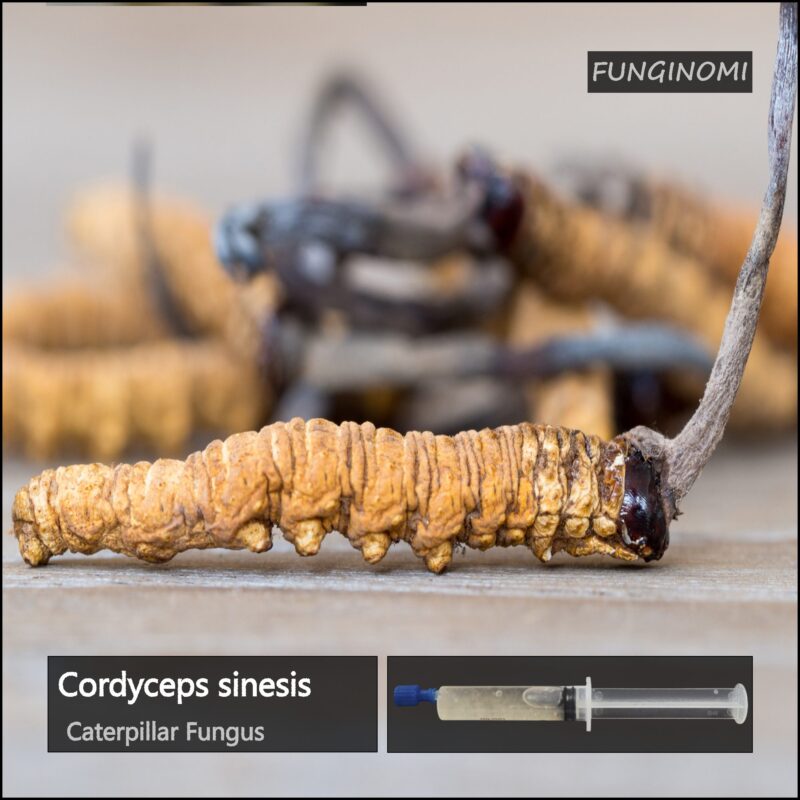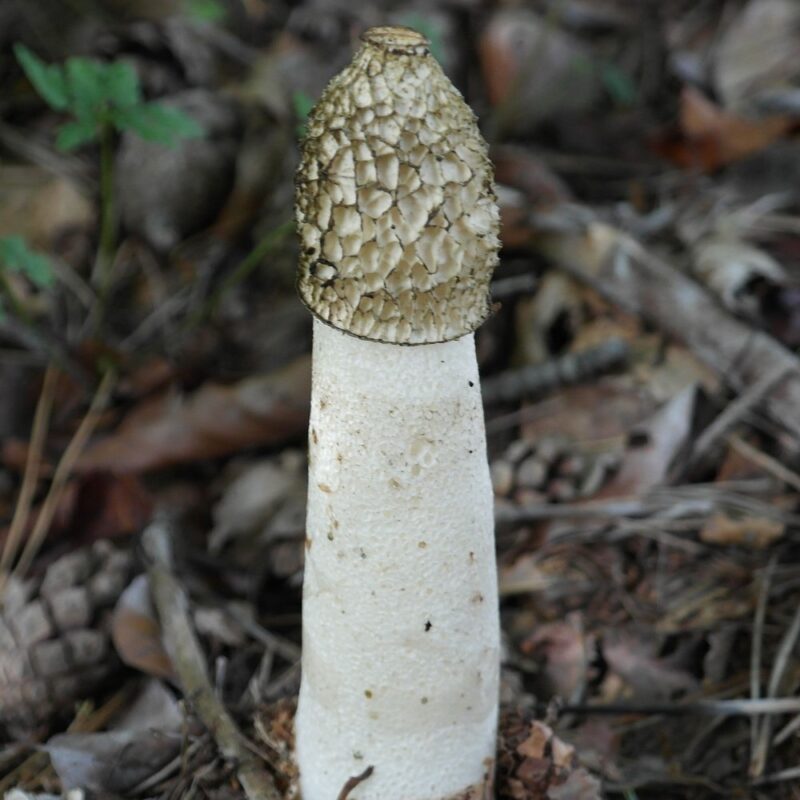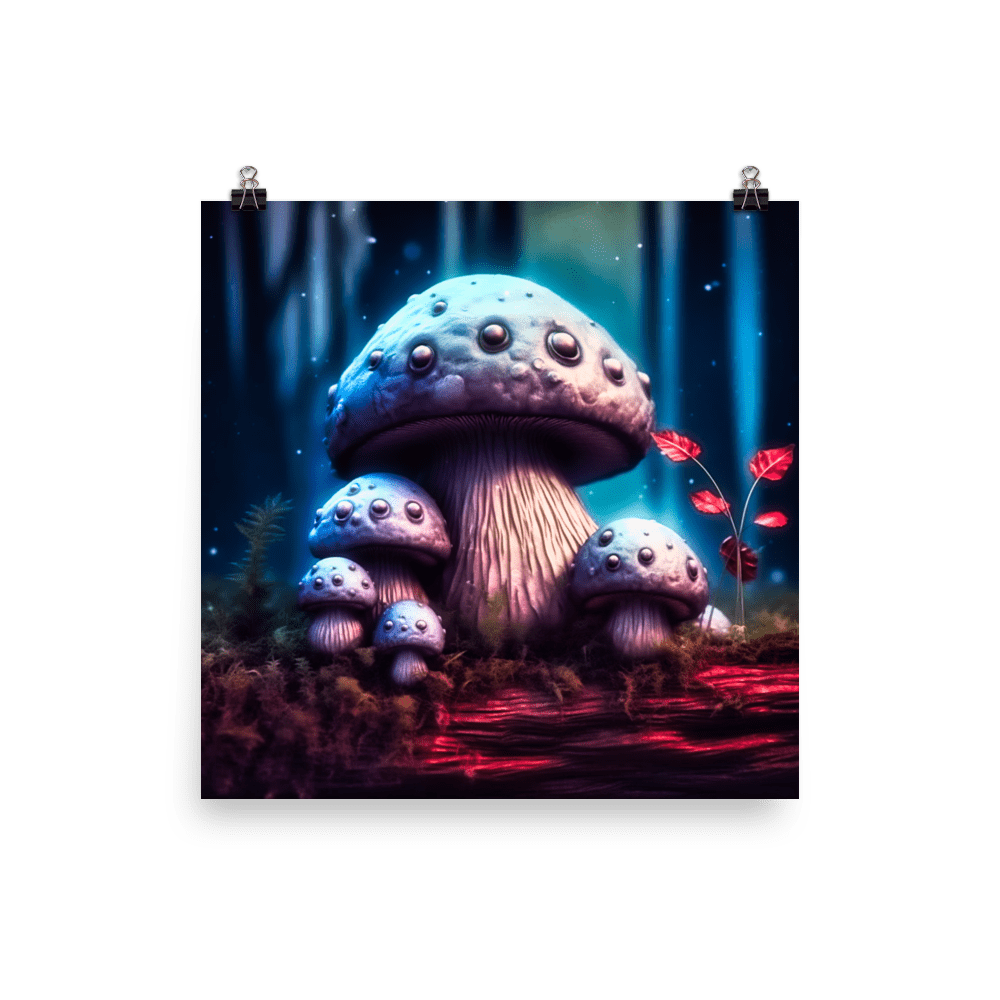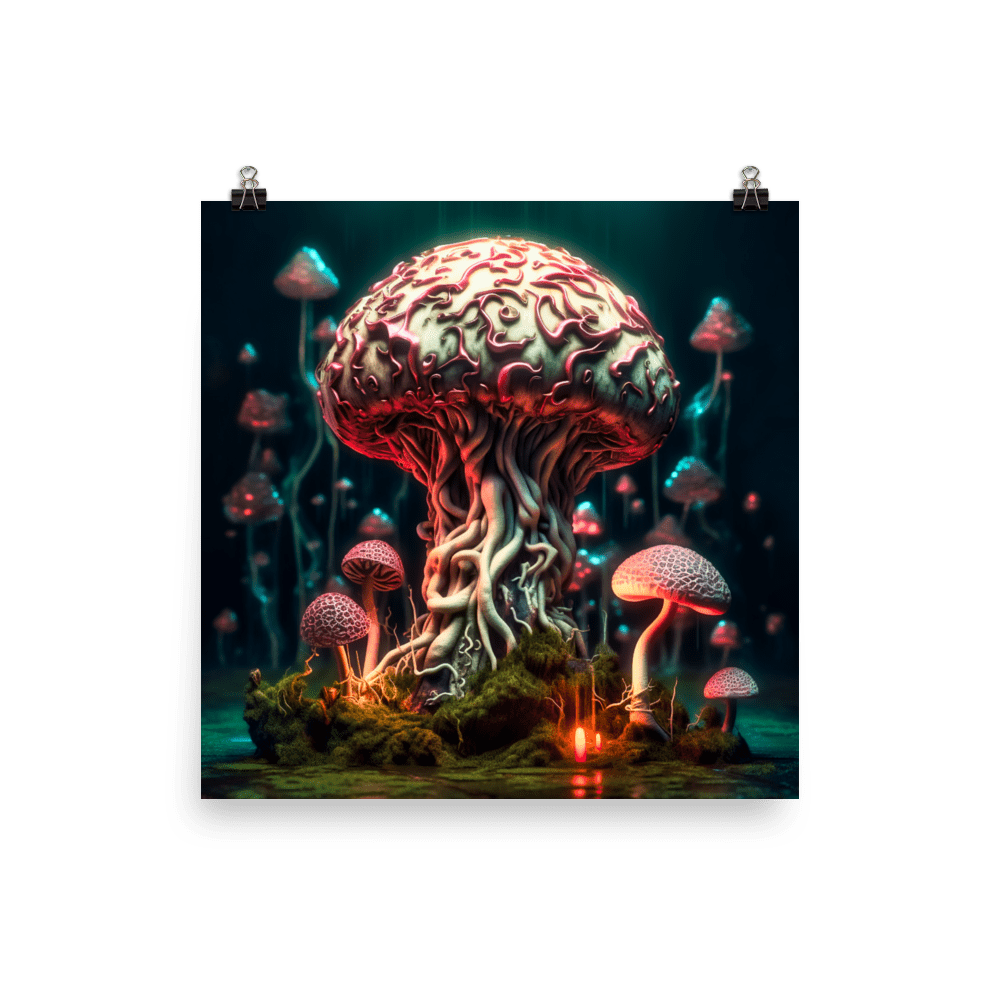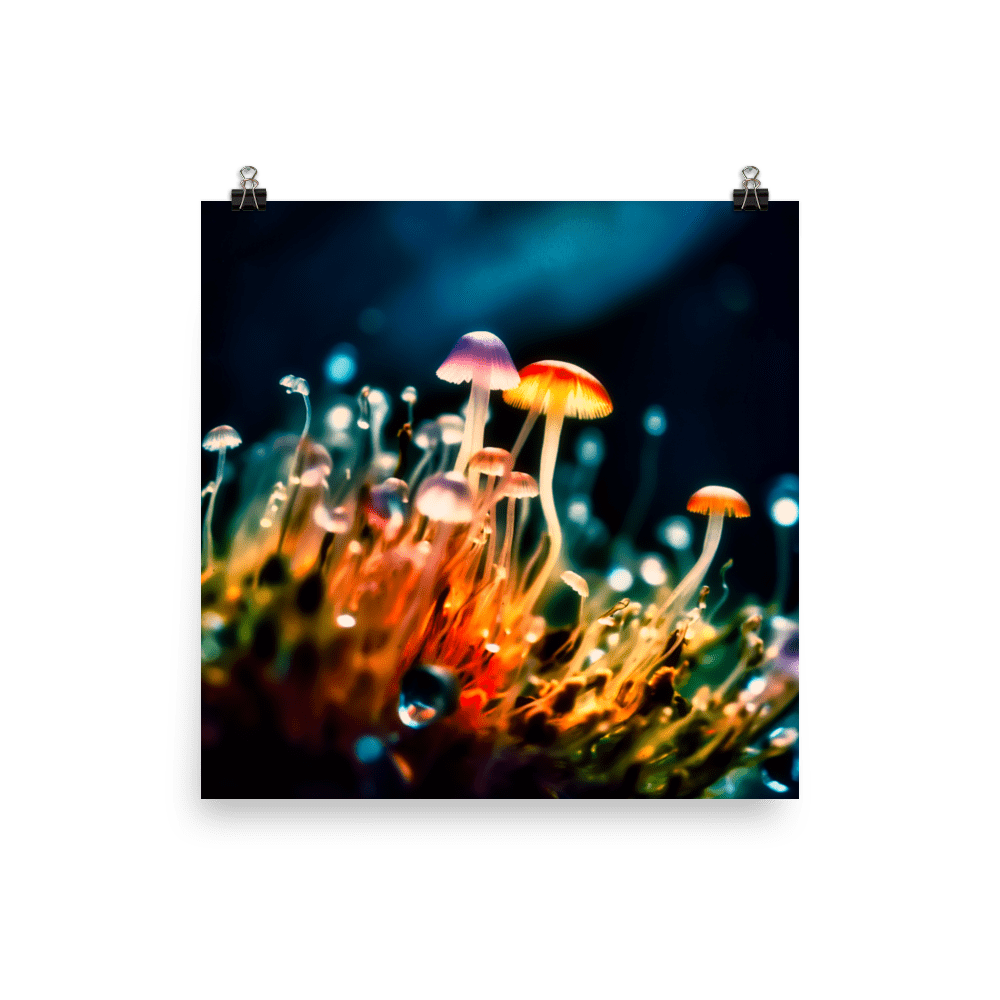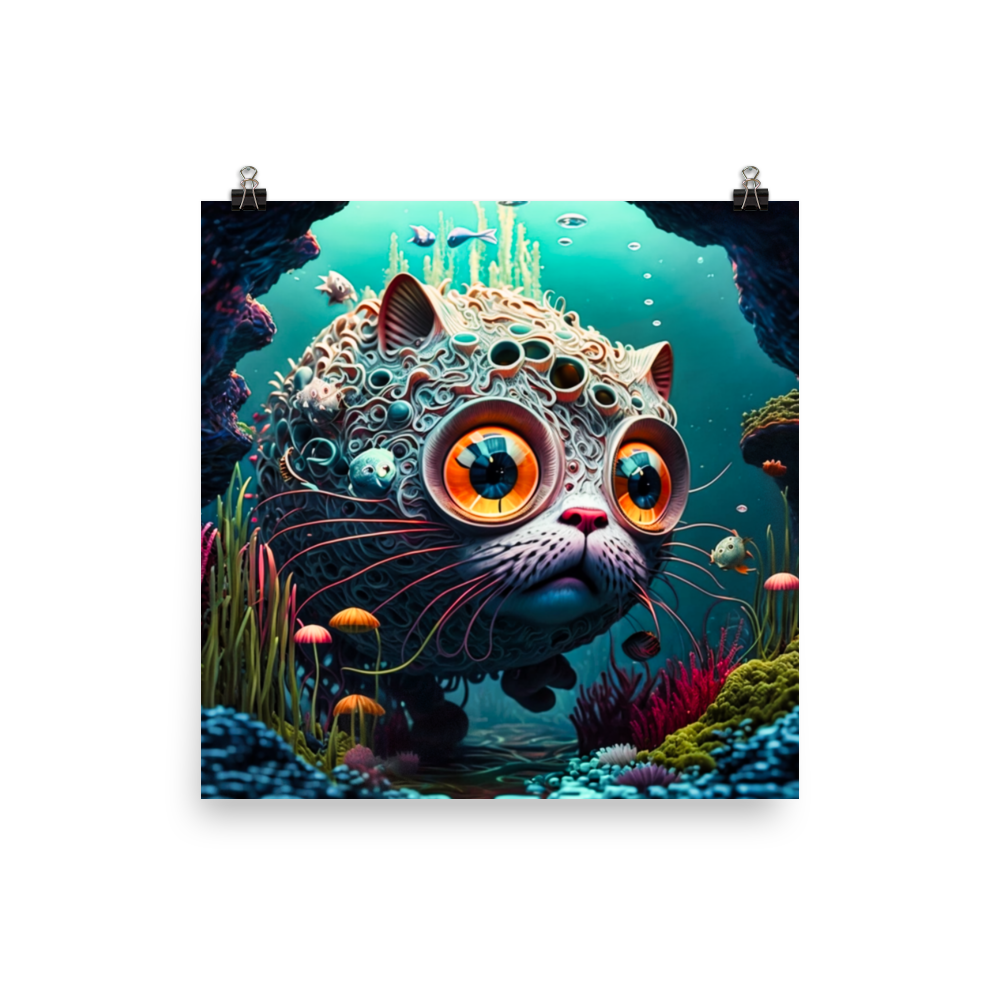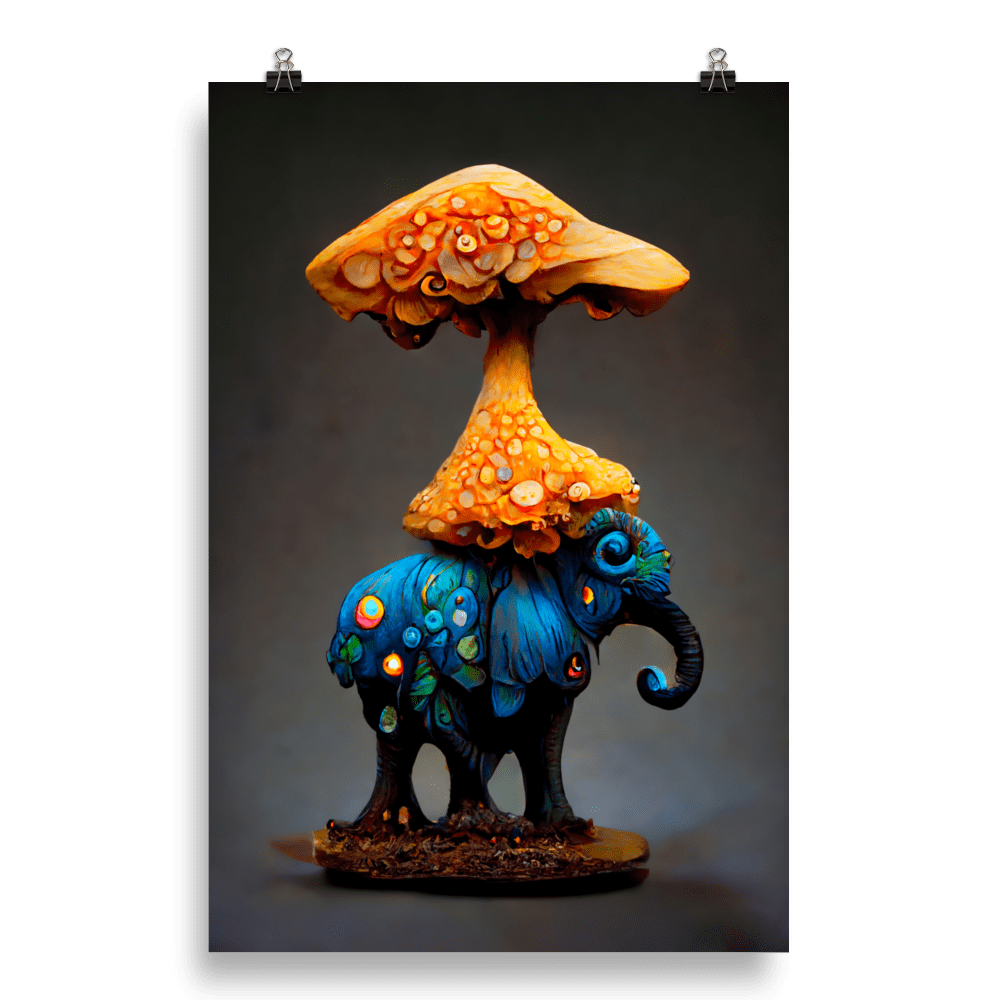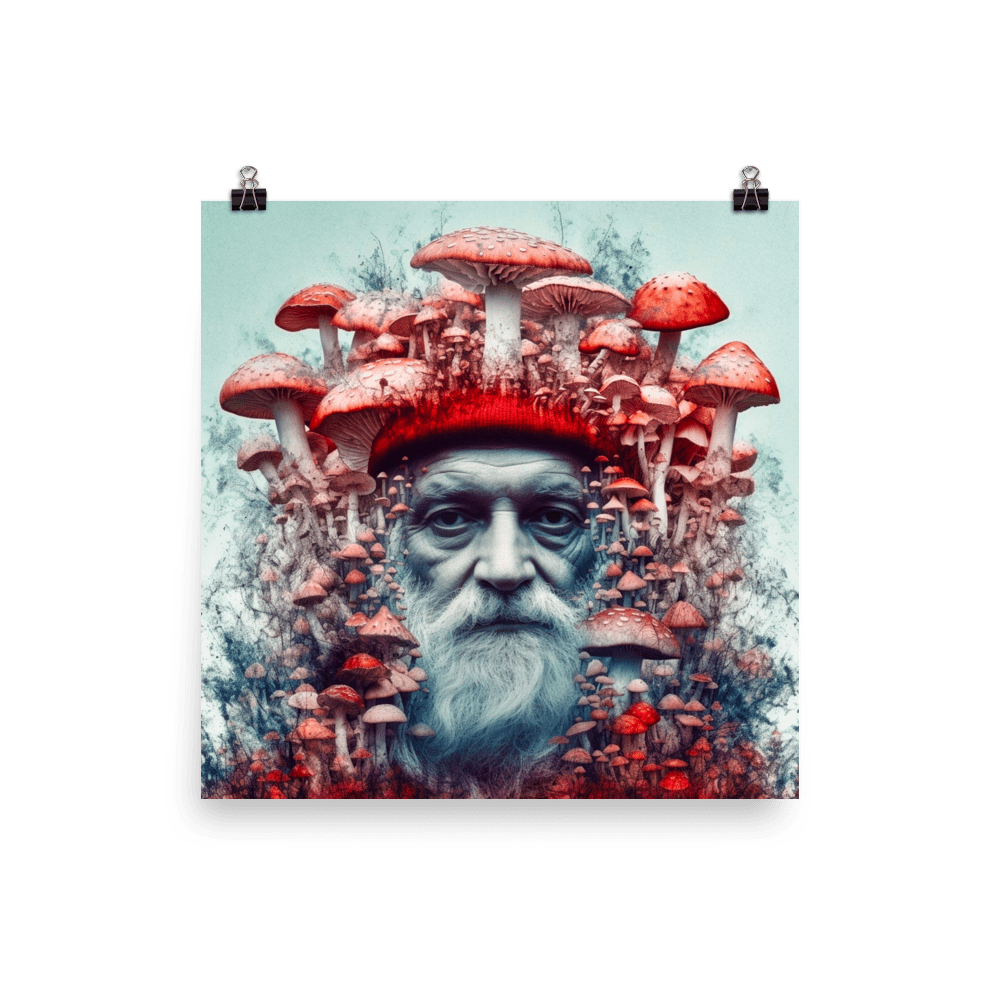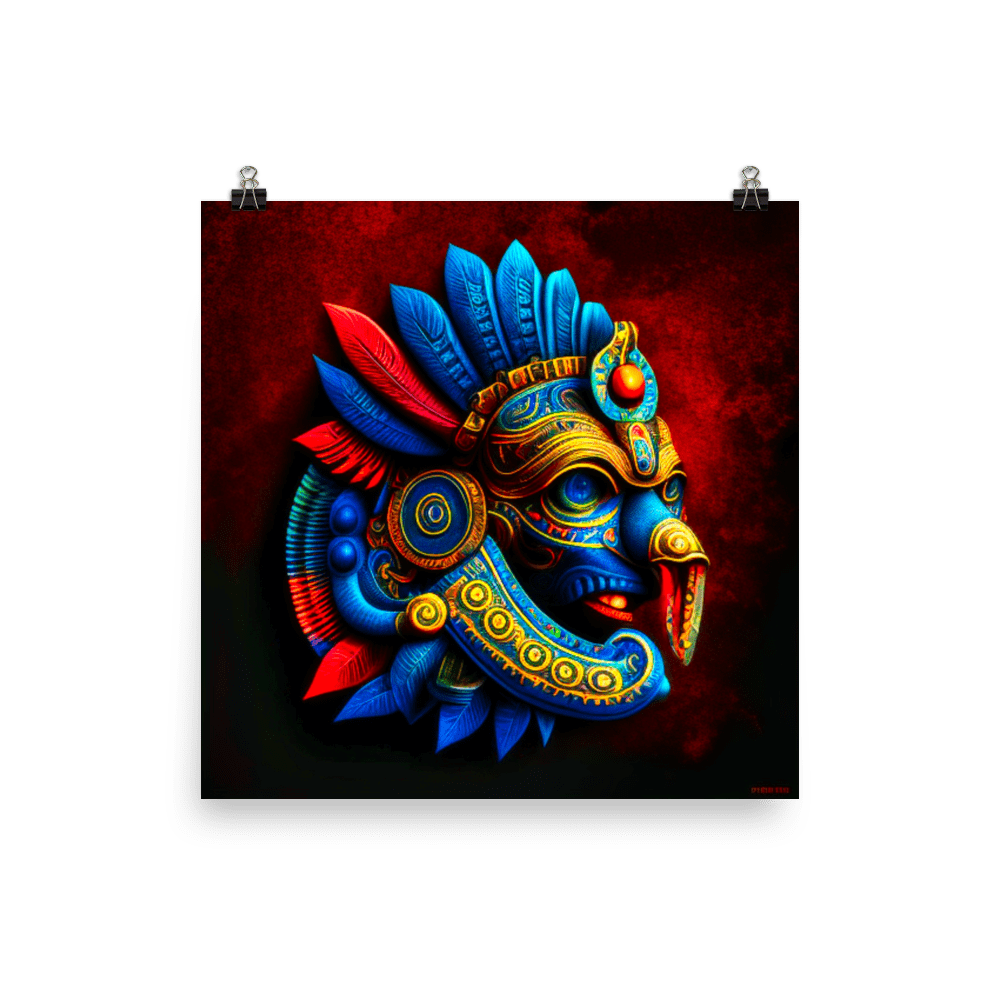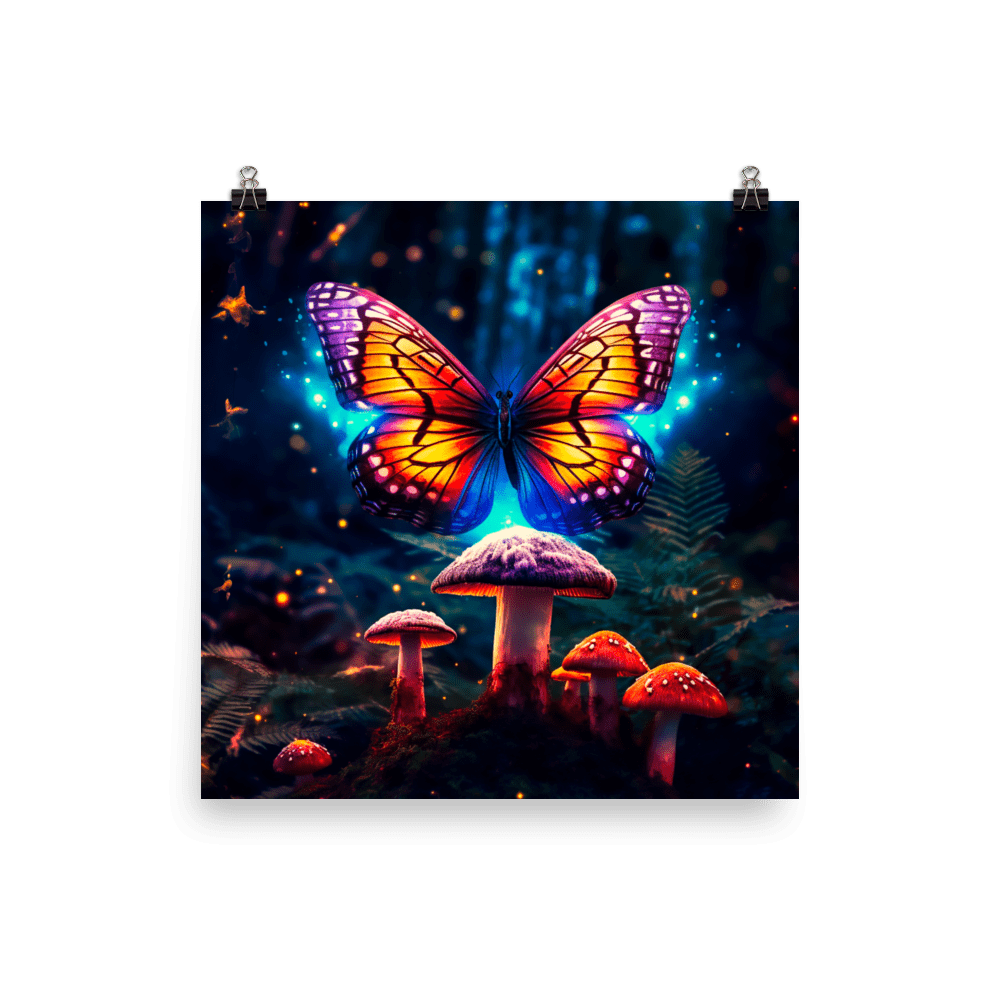The Ultimate Guide to Mushroom Microscopy: Techniques, Equipment, and Identification
Introduction to Mushroom Microscopy

The fascinating field of mushroom microscopy and its importance in studying fungi
In the world of fungi enthusiasts, mushroom microscopy plays a crucial role in unraveling the mysteries hidden within these fascinating organisms. By harnessing the power of microscopes, we can delve into the intricate details of mushrooms and gain valuable insights into their morphology, spore characteristics, and identification. In this ultimate guide, we will explore the techniques, equipment, and methods used in mushroom microscopy, empowering you to embark on your own captivating fungal explorations. Let’s dive in!
Using microscopy for mushroom identification and understanding fungal structures offers a multitude of benefits, including:
-
Enhanced Accuracy: Microscopy enables a detailed examination of mushroom features, such as spores, gills, and microscopic structures. This level of precision allows for more accurate identification and differentiation between closely related species.
-
Species Differentiation: Microscopic examination provides insights into unique characteristics that distinguish one mushroom species from another. These differentiating factors, such as spore size, shape, ornamentation, and color, are often crucial in accurate identification.
-
Unveiling Hidden Features: Many key features of mushrooms are not visible to the naked eye. Microscopy reveals intricate details like cystidia (specialized cells on the mushroom surface), hyphae (filamentous structures), and basidia (spore-bearing structures), enabling a deeper understanding of mushroom biology.
-
Complementing Macroscopic Observations: While macroscopic observations (such as cap color, stem shape, and odor) provide initial clues, microscopy complements these observations by uncovering microscopic details that can confirm or refine identification.
-
Educational Value: Microscopy offers a fascinating educational experience, allowing enthusiasts to explore the diverse world of fungal structures and understand the ecological significance of different mushroom species.
-
Research and Documentation: Microscopy plays a vital role in scientific research and documenting fungal biodiversity. By capturing detailed images of microscopic features, researchers can contribute to the collective knowledge of mushroom taxonomy and ecology.
By harnessing the power of microscopy, mushroom enthusiasts can unlock a wealth of information, leading to more accurate identification, a deeper understanding of fungal structures, and a greater appreciation for the beauty and diversity of mushrooms.
Understanding Mushroom Microscopy
Importance of microscopy in mycology research and mushroom identification
Microscopy holds immense importance in mycology research and the identification of mushrooms. It allows for a comprehensive examination of fungal structures, unveiling intricate details that are crucial for accurate species identification and advancing our knowledge of fungi. Here’s why microscopy plays a vital role:
-
Unraveling Hidden Structures: Microscopy enables researchers and enthusiasts to explore the hidden world of fungal structures. By examining microscopic features such as spores, cystidia, and hyphae, we gain a deeper understanding of the unique characteristics that differentiate one mushroom species from another. These details are often essential for precise identification.
-
Enhanced Accuracy in Identification: Macroscopic observations of mushrooms provide valuable initial clues, but they are limited in their ability to distinguish between closely related species. Microscopy enhances accuracy by revealing specific features that are not visible to the naked eye. The examination of spore size, shape, color, ornamentation, and other microscopic traits aids in the precise identification of mushrooms.
-
Species Differentiation and Taxonomy: Microscopy plays a pivotal role in the field of taxonomy by helping mycologists differentiate between similar species. By analyzing microscopic structures, researchers can classify mushrooms into distinct groups based on shared characteristics, contributing to our understanding of fungal diversity and evolutionary relationships.
-
Research and Discovery: Microscopy is a powerful tool for mycological research, enabling scientists to investigate fungal ecology, life cycles, and interactions with their environments. It facilitates the discovery of new species, helps uncover relationships between different fungal groups, and contributes to our knowledge of the ecological roles played by mushrooms.
-
Education and Learning: Microscopy offers an engaging and educational experience for mycology enthusiasts. It allows them to explore the intricate details of fungal structures, understand the mechanisms of spore production, and appreciate the immense diversity of mushrooms.
-
Preservation and Documentation: Microscopy plays a crucial role in preserving and documenting fungal specimens. By capturing detailed images and measurements of microscopic features, researchers can create comprehensive records of species, contributing to biodiversity databases and facilitating future studies.
In conclusion, microscopy is of paramount importance in mycology research and mushroom identification. It uncovers hidden structures, enhances accuracy, aids in species differentiation, drives research and discovery, fosters education, and supports the preservation and documentation of fungal biodiversity. By embracing microscopy techniques and equipment, enthusiasts can embark on a journey of exploration, deepening their understanding of mushrooms and contributing to the field of mycology.
Overview of the main components of a microscope
A microscope consists of several essential components that work together to magnify and visualize microscopic specimens. Here’s a brief overview of the main components of a microscope:
-
Eyepiece (Ocular): The eyepiece is the lens at the top of the microscope that you look through. It typically magnifies the image further and may contain a pointer or reticle for measurement.
-
Objective Lenses: The objective lenses are located on a rotating nosepiece beneath the eyepiece. They provide varying levels of magnification, typically ranging from 4x to 100x or higher. Each objective lens has a specific magnification power.
-
Stage: The stage is a flat platform where the specimen is placed for observation. It often includes clips or mechanical stage controls to hold the specimen in place and facilitate precise movement.
-
Illumination System: The illumination system consists of a light source, typically located in the base of the microscope, which provides the necessary light to illuminate the specimen. It may include a built-in light bulb, mirror, or even an LED light source.
-
Condenser: The condenser is located beneath the stage and helps focus the light onto the specimen. It contains lenses that concentrate and direct the light to enhance image quality and brightness.
-
Focusing Knobs: Microscopes have coarse and fine focusing knobs that allow you to bring the specimen into sharp focus. The coarse focus knob moves the stage up and down quickly, while the fine focus knob provides finer adjustments for precise focusing.
-
Mechanical Stage Controls: Some microscopes feature mechanical stage controls, including X and Y-axis knobs, which enable precise movement of the stage for examining different areas of the specimen.
-
Diaphragm: The diaphragm is an adjustable disc located beneath the stage that controls the amount of light passing through the specimen. Adjusting the diaphragm can help optimize image contrast and brightness.
-
Body Tube: The body tube connects the eyepiece to the objective lenses. It houses the optical components that transmit and magnify the image from the objective lens to the eyepiece.
-
Base: The base of the microscope provides stability and support for the entire instrument.
These components work together to magnify and illuminate the specimen, allowing you to observe and study microscopic details. Understanding the different parts of a microscope is essential for proper operation and obtaining clear, detailed images during microscopy.
Explanation of key microscopy terms and concepts relevant to mushroom study
When delving into mushroom study with microscopy, it’s important to familiarize yourself with key terms and concepts. Here’s an explanation of some relevant microscopy terms:
-
Magnification: Magnification refers to the degree by which a microscope enlarges the size of an object. It is typically denoted by a number followed by “x” (e.g., 100x), indicating how many times larger the object appears compared to its actual size.
-
Resolution: Resolution is the ability of a microscope to distinguish two closely spaced objects as separate entities. Higher resolution allows for the visualization of finer details. It is influenced by factors such as the quality of lenses and the wavelength of light used.
-
Objective Lenses: Objective lenses are the lenses located on the nosepiece of a microscope. They provide different levels of magnification, such as 4x, 10x, 40x, and 100x. Each objective lens has a specific magnification power and contributes to the total magnification when combined with the eyepiece.
-
Numerical Aperture: Numerical aperture (NA) is a measure of the light-gathering ability of an objective lens. It influences the resolution and determines the amount of detail that can be observed. Higher numerical aperture values generally result in better image quality.
-
Field of View: The field of view is the area visible through the microscope when looking into the eyepiece. It varies depending on the objective lens being used and the microscope’s optical design. Higher magnification typically reduces the field of view.
-
Depth of Field: Depth of field refers to the thickness of the specimen that appears in sharp focus at a given point. At high magnifications, the depth of field becomes shallow, meaning only a small portion of the specimen will be in focus at a time.
-
Köhler Illumination: Köhler illumination is a technique used to achieve even illumination and maximize image quality. It involves aligning the light source, condenser, and diaphragm to ensure uniform illumination across the specimen.
-
Staining: Staining involves applying dyes or chemicals to enhance the visibility of specific structures or features in a specimen. Mushroom researchers may use various staining techniques to highlight fungal structures, such as spores or cell walls.
-
Digital Imaging: Digital imaging involves capturing microscope images using a digital camera or camera-equipped microscope. This allows for documentation, analysis, and sharing of microscopic observations. It is particularly useful for creating image galleries or sharing findings online.
-
Micrometry: Micrometry is the measurement of microscopic objects or structures. It involves using a calibrated scale or software to measure the size of cells, spores, or other features observed under the microscope.
Understanding these key terms and concepts will enhance your ability to effectively use microscopy techniques in the study of mushrooms. It enables you to capture accurate observations, make informed identifications, and contribute to the fascinating world of mycology research.
Essential Techniques for Mushroom Microscopy
Sample preparation: Proper collection, preservation, and preparation techniques for mushroom specimens
Proper collection, preservation, and preparation techniques are essential for obtaining high-quality mushroom specimens for microscopy. Here’s a guide to help you ensure optimal sample preparation:
-
Collection:
- Select healthy and representative specimens: Choose mushrooms that are in good condition, free from damage or decay, and representative of the species you are studying.
- Handle with care: Use a knife or scissors to carefully cut the mushroom at the base of the stem. Avoid excessive handling to prevent damage or spore dispersion.
- Collect multiple specimens: It’s advisable to collect multiple specimens of the same species to account for natural variations.
-
Preservation:
- Immediate processing: Process the specimens as soon as possible after collection to maintain their freshness and prevent degradation.
- Drying: The most common preservation method is air-drying. Place the mushrooms in a well-ventilated area with good airflow, ensuring they are spread out and not touching each other. Allow them to dry completely, usually taking several days to a couple of weeks, depending on the size and moisture content of the mushrooms.
- Desiccants: To speed up the drying process and maintain the quality of the specimens, you can use desiccants like silica gel or specialized mushroom drying agents. Place the mushrooms in a container with the desiccant, which will absorb moisture and facilitate quicker drying.
-
Preparation:
- Rehydrating dried specimens (optional): If you intend to study the fresh characteristics of dried specimens, you can rehydrate them by soaking them in water for a short period. This process can restore some of the original features and make them easier to work with.
- Mounting: For microscopy, you can create microscope slides by mounting a small section of the mushroom on a glass slide. Use a sharp blade or scalpel to cut thin sections or remove specific parts like gills, cap surface, or stem tissue. Carefully place the specimen on the slide, ensuring it lies flat and is properly oriented for observation.
- Staining (optional): Depending on your research goals, you may choose to stain the specimen to enhance specific structures. Follow appropriate staining protocols and use suitable dyes or stains recommended for mushroom microscopy.
Remember to label each specimen with relevant information, such as collection date, location, and any notable observations. Properly documenting your specimens will be beneficial for accurate identification and future reference.
By following these collection, preservation, and preparation techniques, you can ensure the integrity and usability of your mushroom specimens for microscopy. It allows for detailed observation of fungal structures and enhances your ability to explore the fascinating world of mushrooms under the microscope.
Slide preparation: Step-by-step instructions on mounting mushroom samples on slides for microscopy
-
Gather your materials:
- Clean glass slides
- Cover slips
- Microscope slide mounting medium (e.g., water, glycerol, lactophenol cotton blue)
- Fine-point forceps or a needle
- Clean, soft brush or cotton swabs
- Optional: Staining reagents or dyes, if desired
-
Prepare the mushroom sample:
- Select a small, representative section of the mushroom to mount. This can be a portion of the cap surface, gills, or stem tissue, depending on your research focus.
- If working with fresh mushrooms, gently clean the specimen using a soft brush or cotton swab to remove any dirt or debris. Avoid excessive handling.
- If working with dried mushrooms, rehydrate the specimen in water for a short period if desired, following the rehydration process mentioned earlier.
-
Mount the specimen:
- Place a clean glass slide on your workspace.
- Using fine-point forceps or a needle, carefully transfer the mushroom sample to the center of the slide. Ensure the specimen lies flat and is properly oriented for observation.
- If desired, add a few drops of a staining reagent or dye to the specimen to enhance specific features. Follow the instructions for the staining reagent you are using.
- Add a small amount of mounting medium (water, glycerol, lactophenol cotton blue, etc.) to the specimen, ensuring it covers the sample adequately.
-
Apply the cover slip:
- Gently place a cover slip over the mounted specimen, starting from one edge and carefully lowering it onto the slide. Avoid trapping air bubbles as much as possible.
- Press down lightly on the cover slip to ensure a secure and even distribution of the mounting medium.
-
Seal the edges (optional):
- If you want to prevent drying or preserve the slide for long-term storage, you can seal the edges of the cover slip using a suitable sealant, such as nail polish or commercial slide sealants. Apply the sealant along the edges of the cover slip, avoiding contact with the specimen.
-
Label the slide:
- Using a permanent marker or labeling system, write relevant information on the slide, including the specimen’s identification, collection date, location, and any other details you deem important.
-
Allow the slide to dry:
- Leave the slide undisturbed in a clean, dust-free area to allow the mounting medium to dry completely. The drying time will depend on the medium used and can range from a few hours to several days.
Once the slide is fully dry, it will be ready for observation under the microscope. Handle the slide with care to avoid damaging the cover slip or dislodging the specimen.
By following these step-by-step instructions, you can effectively mount mushroom samples on slides for microscopy, enabling detailed examination and analysis of fungal structures.
Staining techniques: Introduction to staining methods for enhancing specific fungal structures
Staining techniques are valuable tools in microscopy for enhancing specific fungal structures, making them more visible and aiding in their identification and study. Here’s an introduction to some commonly used staining methods in mushroom microscopy:
-
Lactophenol Cotton Blue (LPCB):
- LPCB is a widely used staining solution for mushrooms. It contains a combination of phenol, lactic acid, cotton blue dye, and water.
- LPCB stains fungal structures such as cell walls, spores, and hyphae, making them easier to observe under the microscope.
- To use LPCB, place a small piece of the mushroom sample in a drop of the stain on a slide. Gently crush the specimen to release the pigments and allow them to diffuse. Cover with a cover slip and examine under the microscope.
-
Congo Red:
- Congo Red is a staining dye that can be used to highlight fungal structures like fungal cell walls and amyloid structures.
- It stains cell walls red or pink and amyloid structures blue or green.
- Prepare a dilute solution of Congo Red and apply a few drops to the mushroom specimen on a slide. Allow the dye to soak into the specimen for a few minutes, rinse gently with water, and examine under the microscope.
-
Melzer’s Reagent:
- Melzer’s Reagent is commonly used for staining mushroom spores, especially to aid in spore ornamentation observation.
- It consists of a combination of iodine, chloral hydrate, and water.
- Apply a drop of Melzer’s Reagent to the spore-bearing surface of the mushroom on a slide. Gently press a cover slip onto the specimen and allow the stain to interact with the spores. Examine under the microscope to observe spore features.
-
Safranin and Methylene Blue:
- Safranin and Methylene Blue are general-purpose staining dyes that can be used to enhance overall contrast and visualization of fungal structures.
- Prepare dilute solutions of Safranin or Methylene Blue and apply a few drops to the mushroom specimen on a slide. Allow the dye to soak into the specimen for a few minutes, rinse gently with water, and examine under the microscope.
It’s important to note that staining techniques may vary depending on the specific research goals, target structures, and the staining characteristics of the mushroom species being studied. Always follow established staining protocols and consider the compatibility of staining methods with your specific objectives.
Staining can provide valuable insights into the morphology, cell structure, and identification of mushrooms. It enhances the visibility of specific fungal structures, aiding in the interpretation of microscopic observations and contributing to a deeper understanding of fungi.
Recommended Microscopy Equipment
Microscope types: Overview of different microscope types suitable for mushroom microscopy
When it comes to mushroom microscopy, different microscope types offer various features and capabilities for observing fungal structures. Here’s an overview of microscope types commonly used in mushroom microscopy:
-
Compound Microscope:
- Compound microscopes are the most common type used in microscopy. They utilize multiple lenses to provide high magnification and resolution.
- Compound microscopes are suitable for observing various fungal structures, including spores, hyphae, and microscopic features on the surface of mushrooms.
- They offer a range of magnification options with interchangeable objective lenses, allowing for detailed examination and analysis of mushroom specimens.
-
Stereo Microscope (Dissecting Microscope):
- Stereo microscopes provide a three-dimensional view of specimens, making them ideal for examining larger mushroom specimens or macroscopic features.
- These microscopes have lower magnification compared to compound microscopes but offer a wider field of view, enabling observation of entire mushrooms or parts thereof.
- Stereo microscopes are useful for studying mushroom characteristics such as surface textures, gill patterns, and overall morphology.
-
Polarizing Microscope:
- Polarizing microscopes employ polarized light to examine the optical properties of materials, including certain mushroom structures.
- They are particularly useful for studying the polarizing characteristics of mushroom spores, cell walls, or other specialized structures.
- By analyzing how polarized light interacts with mushroom components, polarizing microscopes can provide insights into the composition and arrangement of fungal structures.
-
Fluorescence Microscope:
- Fluorescence microscopes use specific light wavelengths to excite fluorescent molecules in the specimen, producing vibrant fluorescent signals.
- Fluorescence microscopy is beneficial for studying certain compounds or structures within mushrooms, such as fluorescently labeled antibodies or fluorescently tagged fungal cells.
- This technique allows for visualization of specific components or processes in mushrooms, such as cell metabolism or protein localization.
-
Phase Contrast Microscope:
- Phase contrast microscopes enhance the visibility of transparent or low-contrast specimens, making them useful for observing fungal structures that may be challenging to visualize with other techniques.
- This type of microscope converts subtle changes in light phase into variations in brightness, resulting in improved contrast and detail.
- Phase contrast microscopy can be advantageous for studying delicate or translucent mushroom structures, such as fungal hairs (trichomes) or thin-walled hyphae.
The choice of microscope type will depend on the specific research objectives, the size and characteristics of the mushroom specimens, and the desired level of detail and observation. It’s important to select a microscope that offers suitable magnification, resolution, and imaging capabilities to effectively study the fungal structures of interest in mushroom microscopy.
Choosing the right microscope: Factors to consider when selecting a microscope for mushroom studies
When selecting a microscope for mushroom studies, several factors should be considered to ensure it meets your specific requirements. Here are key factors to consider:
-
Magnification and Resolution:
- Consider the range of magnification options offered by the microscope. Higher magnification allows for detailed examination of microscopic structures such as spores and hyphae.
- Look for a microscope with good resolution, which determines the level of detail that can be observed. Higher resolution enables clearer visualization of fine fungal structures.
-
Optical Quality:
- The quality of the lenses and optics is crucial for obtaining sharp and clear images. Look for microscopes with high-quality lenses that minimize distortions, aberrations, and chromatic aberrations.
- Consider the numerical aperture (NA) of the objective lenses, as a higher NA generally leads to improved image quality and resolution.
-
Illumination:
- Adequate and adjustable illumination is essential for proper visualization of mushroom specimens.
- Look for microscopes with adjustable light sources, such as LED or halogen lamps, to control the intensity and angle of illumination.
- Some microscopes offer additional illumination techniques like phase contrast or darkfield illumination, which can enhance the visibility of specific fungal structures.
-
Ergonomics and Comfort:
- Consider the comfort and usability of the microscope during extended periods of observation.
- Look for features like ergonomic design, adjustable height, and focus knobs for easy manipulation and reduced strain on your body.
-
Modularity and Upgradability:
- Consider the modularity and upgradability options of the microscope system. This allows you to expand its capabilities in the future by adding accessories or upgrading components as needed.
-
Budget:
- Set a budget based on your requirements and research goals. Microscope prices can vary significantly, so it’s important to strike a balance between functionality and affordability.
-
Application-Specific Requirements:
- Consider any specific requirements related to your mushroom studies. For example, if you plan to use specialized staining techniques or work with fluorescent markers, ensure the microscope is compatible with those methods.
-
User Reviews and Recommendations:
- Read user reviews and seek recommendations from experienced mycologists or researchers who have used microscopes for mushroom studies. Their insights can help you make an informed decision.
By considering these factors, you can select a microscope that suits your needs and maximizes your ability to study the intricate world of mushrooms. Remember that the choice of microscope should align with your research goals, the types of fungal structures you intend to observe, and the level of detail required for your studies.
Essential accessories: Must-have equipment such as slides, coverslips, pipettes, and more
When conducting mushroom microscopy, several essential accessories and equipment are necessary to facilitate sample preparation, observation, and analysis. Here are some must-have accessories for mushroom microscopy:
-
Microscope Slides:
- Microscope slides are rectangular pieces of glass used to hold and mount mushroom specimens for observation under the microscope. They provide a stable platform for examining fungal structures.
- Choose high-quality glass slides that are clean, flat, and resistant to breaking or scratching.
-
Coverslips:
- Coverslips are small, thin squares or circles of glass that are placed over the mounted specimen on a slide. They protect the specimen and provide a clear surface for microscopic observation.
- Select coverslips that are compatible in size with your microscope slides and have appropriate thickness (e.g., 0.13-0.17 mm).
-
Pipettes or Droppers:
- Pipettes or droppers are essential for transferring liquids during sample preparation and staining processes.
- Use pipettes or droppers to dispense mounting medium, staining solutions, or reagents onto the specimen or slide.
-
Forceps or Needles:
- Fine-point forceps or needles are useful for handling delicate mushroom specimens, transferring small sections to slides, or manipulating coverslips during slide preparation.
- Choose forceps or needles with a fine tip for precise control and minimal damage to the specimens.
-
Staining Reagents and Dyes:
- Depending on your research objectives, various staining reagents and dyes may be necessary to enhance specific fungal structures or highlight certain features.
- Common staining reagents include Lactophenol Cotton Blue (LPCB), Congo Red, Melzer’s Reagent, Safranin, and Methylene Blue.
-
Mounting Medium:
- Mounting medium is a substance used to secure the mushroom specimen on the slide and provide a clear medium for observation.
- Different mounting media can be used, such as water, glycerol, lactophenol cotton blue, or specialized mounting solutions. The choice depends on the specific requirements of your study.
-
Slide Boxes or Storage Containers:
- Slide boxes or storage containers are crucial for organizing and protecting prepared slides. They help prevent damage, dust accumulation, and contamination of the slides.
- Choose slide boxes that provide secure storage, protect against light exposure, and have compartments to keep slides separate and well-organized.
-
Cleaning Supplies:
- Cleaning supplies such as lens tissues, lens cleaning solution, and compressed air canisters are essential for maintaining the cleanliness and clarity of microscope lenses and slides.
- Regular cleaning of microscope components ensures optimal image quality and prevents artifacts or contamination.
These essential accessories will aid in the proper preparation, mounting, and observation of mushroom specimens under the microscope. Ensure you have an adequate supply of these items to facilitate smooth and efficient microscopy procedures.
Identifying Mushroom Structures under the Microscope
Fungal structures: Detailed explanation of key features observed in mushroom microscopy, including spores, hyphae, basidia, and more
Mushroom microscopy allows for the examination and identification of various fungal structures. Here’s a detailed explanation of key features observed in mushroom microscopy:
-
Spores:
- Spores are reproductive structures produced by fungi. They are usually microscopic and come in various shapes, sizes, and colors.
- Mushroom microscopy enables the observation of spore morphology, including shape (e.g., spherical, elliptical, cylindrical), surface ornamentation (e.g., smooth, rough, spiny), and coloration.
- Spore characteristics play a crucial role in mushroom identification, as they can vary significantly between different species.
-
Hyphae:
- Hyphae are the thread-like filaments that form the main body (mycelium) of a fungus. They are responsible for nutrient absorption and fungal growth.
- Under the microscope, hyphae can be observed as branching, tubular structures. They may appear septate (divided into compartments by crosswalls) or non-septate (continuous cytoplasmic flow).
- Hyphal diameter, branching patterns, and presence of specialized structures (e.g., clamp connections) can provide important diagnostic features for identifying mushroom species.
-
Basidia:
- Basidia are specialized structures found in the gills, pores, or other spore-bearing surfaces of mushrooms. They are responsible for producing and dispersing spores.
- Basidia are typically club-shaped and attached to a supporting structure (e.g., gill surface). They bear basidiospores on their surface.
- Mushroom microscopy allows for the examination of basidia morphology, including shape, size, arrangement, and presence of appendages or projections.
-
Cystidia:
- Cystidia are sterile cells found among the basidia and other tissues of mushrooms. They serve various functions, such as protection, defense, or aiding in spore dispersal.
- Mushroom microscopy enables the observation of different types of cystidia, including pleurocystidia (found on gill faces), cheilocystidia (found on gill edges), and other specialized cystidia.
- Cystidia can have diverse shapes, sizes, and surface features, and their presence and characteristics are often important for species identification.
-
Vegetative Structures:
- Apart from reproductive structures, mushroom microscopy allows for the examination of vegetative structures, such as rhizomorphs, sclerotia, or specialized tissues like stipes and caps.
- Rhizomorphs are dense, cord-like structures that aid in nutrient transport and mycelial expansion. Sclerotia are compact masses of mycelium that serve as survival structures.
- Detailed microscopy can reveal the internal structure, cell arrangement, and tissue differentiation within these vegetative structures.
-
Pileipellis and Cuticle:
- The pileipellis and cuticle refer to the outer surface layers of a mushroom’s cap. These layers protect the underlying tissues and play a role in moisture regulation and spore dispersal.
- Mushroom microscopy can provide insights into the structure and composition of the pileipellis and cuticle, including the presence of various cell types (e.g., terminal cells, cystidia) and surface features (e.g., ornamentation, hairs).
By carefully observing and documenting these fungal structures using mushroom microscopy, mycologists and researchers can identify and characterize different mushroom species, understand their ecological roles, and contribute to the broader field of mycology.
Identification techniques: Step-by-step guide to using microscopic features for accurate mushroom identification
Using microscopic features for accurate mushroom identification requires careful observation and analysis. Here’s a step-by-step guide to help you utilize microscopic features effectively:
-
Collect the Mushroom Specimen:
- Choose a mature and intact mushroom specimen for analysis. Handle it carefully to avoid damaging the delicate structures.
-
Prepare the Mushroom Slide:
- Cut a small section of the mushroom cap, gill, or other relevant parts.
- Place the section on a microscope slide and cover it with a coverslip. Use a mounting medium to secure the specimen.
-
Set Up the Microscope:
- Adjust the microscope for proper magnification and illumination.
- Start with a low magnification objective (e.g., 10x or 20x) to locate the desired features. Then, switch to higher magnification (e.g., 40x or 100x) for detailed examination.
-
Observe Spore Morphology:
- Locate the spore-bearing structures, such as gills, pores, or spines.
- Focus on the basidia and observe the shape, size, and arrangement of the spores.
- Note the spore color, ornamentation (if any), and any distinct features like germ pores or spines.
-
Examine Hyphae and Cystidia:
- Shift the focus to the mushroom’s hyphae and cystidia, which can be found on the gill faces or other relevant surfaces.
- Identify and analyze the shape, size, and presence of specialized structures (e.g., clamps, appendages) in the hyphae.
- Note the shape, size, and surface features (e.g., presence of encrustations, hairs) of different types of cystidia.
-
Analyze Other Microscopic Features:
- Pay attention to other microscopic features, such as the structure and arrangement of the pileipellis, cuticle, and other tissues.
- Note the presence of any unique structures, cell types, or surface ornamentation.
-
Refer to Identification Resources:
- Consult reliable identification resources, such as field guides, mushroom identification books, or online databases, to compare your observed features with known species.
- Look for matches or close similarities in terms of spore characteristics, hyphal features, and other relevant microscopic details.
-
Document and Record Observations:
- Take clear and detailed notes of all the observed microscopic features.
- Capture photographs or make sketches of the key features for reference and documentation.
- Record the magnification used, staining techniques (if applicable), and any additional observations that may aid in identification.
-
Compare and Confirm Species:
- Compare your findings with established species descriptions and keys.
- Consider the macroscopic features, habitat, and distribution information in addition to the microscopic features to arrive at a confident identification.
-
Validate Results and Seek Expertise:
- Validate your identification by cross-referencing with expert mycologists or mushroom identification forums.
- Share your observations and seek guidance from experienced identifiers to ensure accuracy.
By following these steps and utilizing microscopic features, you can enhance your ability to accurately identify mushrooms and contribute to the field of mycology. Remember that mushroom identification is a complex process, and it is essential to develop a strong foundation in both macroscopic and microscopic identification techniques to achieve reliable results.
Common pitfalls: Tips for avoiding misidentification and recognizing ambiguous structures.
Common pitfalls: Tips for avoiding misidentification and recognizing ambiguous structures.
Avoiding misidentification and recognizing ambiguous structures is crucial for accurate mushroom identification. Here are some tips to help you navigate common pitfalls in the process:
-
Develop Proficiency: Gain expertise in macroscopic and microscopic features by studying field guides, attending workshops, and seeking guidance from experienced mycologists. Build a solid foundation before attempting complex identifications.
-
Multiple Observations: Make multiple observations of the mushroom specimen, examining different parts and various developmental stages. Some features may only be present at specific stages or in specific areas.
-
Use Multiple References: Consult multiple reliable identification resources to cross-reference information and confirm your findings. Different sources may provide complementary details and help verify your observations.
-
Consider Variability: Understand that mushroom characteristics can vary within a species due to factors such as age, environment, and genetic variation. Familiarize yourself with the natural range of variation to avoid misidentifications.
-
Compare with Known Species: Compare your specimen with known species rather than relying solely on general descriptions or assumptions. Look for matches or close resemblances in both macroscopic and microscopic features.
-
Document and Preserve: Take detailed notes, photographs, or sketches of the observed features, ensuring you capture the key distinguishing characteristics. These records can aid in future reference and help with verification.
-
Consult Experts: Seek guidance from experienced mycologists, local mushroom clubs, or online forums specializing in mushroom identification. Share your observations and ask for input to validate your findings or gain alternative perspectives.
-
Be Mindful of Interpretation: Exercise caution when interpreting ambiguous or variable features. Avoid jumping to conclusions based on a single observation. Consider the overall context and corroborating evidence to form a well-rounded conclusion.
-
Accept Limitations: Recognize the limitations of your own expertise and the available resources. Some identifications may require advanced techniques, DNA analysis, or specialist knowledge. Don’t hesitate to seek professional assistance when needed.
-
Continual Learning: Mushroom identification is a lifelong learning process. Stay curious, engage in ongoing education, and remain open to new discoveries and evolving taxonomic knowledge. Embrace the opportunity to refine your skills and expand your understanding.
By staying vigilant, practicing critical thinking, and continually improving your knowledge and skills, you can minimize misidentifications and navigate the challenges posed by ambiguous mushroom structures. Remember that even experienced mycologists encounter difficulties, so perseverance and a commitment to learning are essential in the world of mushroom identification.
Advanced Microscopy Techniques for Mushroom Research
DNA sequencing: Overview of molecular techniques for studying mushroom taxonomy and phylogeny.
DNA sequencing: Overview of molecular techniques for studying mushroom taxonomy and phylogeny.
DNA sequencing has revolutionized the field of mushroom taxonomy and phylogeny, providing powerful tools for studying the genetic relationships among fungi. Here’s an overview of molecular techniques commonly used in mushroom research:
-
DNA Extraction:
- The first step in DNA sequencing is extracting DNA from the mushroom specimen. Various DNA extraction methods are available, including CTAB-based protocols, commercial extraction kits, or specialized techniques for challenging samples (e.g., herbarium specimens).
-
PCR (Polymerase Chain Reaction):
- PCR is a widely used technique that amplifies specific DNA regions of interest. In mushroom research, the internal transcribed spacer (ITS) region of the ribosomal DNA (rDNA) is commonly targeted due to its high variability and utility for species identification.
- PCR involves multiple cycles of DNA denaturation, primer annealing, and DNA synthesis, resulting in the amplification of the targeted DNA region.
-
DNA Sequencing:
- After PCR amplification, the DNA products are sent for DNA sequencing. Sanger sequencing is a traditional method where DNA fragments are subjected to capillary electrophoresis to determine their nucleotide sequence. Next-generation sequencing (NGS) technologies, such as Illumina or PacBio, provide high-throughput sequencing capabilities.
-
Sequence Analysis and Alignment:
- Once the DNA sequences are obtained, they are analyzed and compared to reference databases or existing sequence data. Bioinformatics tools, such as BLAST or specialized fungal databases, are used to identify similar sequences and assign taxonomic information.
-
Phylogenetic Analysis:
- Phylogenetic analysis aims to reconstruct the evolutionary relationships among different mushroom species based on DNA sequence data. Multiple sequence alignment, phylogenetic tree construction, and statistical analyses are performed using software such as MEGA, PAUP*, or BEAST.
-
Molecular Markers:
- Besides the ITS region, other DNA regions or markers are also employed for mushroom taxonomy and phylogeny. Examples include the large subunit (LSU) and small subunit (SSU) regions of rDNA, as well as protein-coding genes like the elongation factor 1-alpha (EF1α) or the RNA polymerase II subunit (RPB).
-
Metabarcoding:
- Metabarcoding is a high-throughput sequencing approach that allows simultaneous identification of multiple organisms from complex environmental samples. It involves amplifying and sequencing specific DNA regions (e.g., ITS) from mixed samples, enabling the assessment of fungal diversity in various habitats.
-
DNA Barcoding:
- DNA barcoding involves using short DNA sequences from standardized genomic regions as molecular tags for species identification. In mushrooms, the ITS region is commonly used as a DNA barcode due to its variability and discriminative power.
By utilizing DNA sequencing techniques, mycologists can accurately identify and classify mushroom species, unravel their evolutionary relationships, discover new taxa, and gain insights into the fungal kingdom’s diversity and ecology. DNA sequencing complements traditional morphological identification methods, enhancing our understanding of mushrooms and their evolutionary history.
Microphotography: Techniques and tips for capturing high-quality microscope images of mushrooms.
Microphotography: Techniques and tips for capturing high-quality microscope images of mushrooms.
Microphotography is a valuable tool for capturing high-quality microscope images of mushrooms, allowing for detailed documentation and analysis. Here are some techniques and tips to help you capture excellent microphotographs of mushrooms:
-
Prepare the Specimen: Ensure that the mushroom specimen is properly prepared and mounted on a microscope slide. Use appropriate mounting techniques, such as using a mounting medium or staining, if necessary, to enhance the visibility of specific structures.
-
Choose the Right Microscope: Select a microscope with suitable magnification and imaging capabilities for microphotography. Ideally, use a compound microscope equipped with a high-quality objective lens, good lighting source (e.g., LED or halogen), and a camera attachment or dedicated microscope camera.
-
Optimize Illumination: Adjust the microscope’s illumination to achieve optimal lighting conditions. Adjust the intensity, angle, and direction of light to minimize glare, shadows, or reflections that could obscure or distort the mushroom structures.
-
Focus and Depth of Field: Achieve precise focus on the mushroom structures of interest using the microscope’s focusing knobs. Adjust the fine focus carefully to capture sharp and detailed images. Be mindful of the depth of field, as some structures may require focus stacking or using appropriate aperture settings to maximize the depth of field.
-
Stabilize the Microscope: Use a stable and vibration-free platform or tripod for the microscope to minimize movement and ensure sharp image capture. This helps reduce blurring or distortion caused by shaky hands or vibrations.
-
Camera Settings: Set the camera settings appropriately to capture high-quality images. Use a low ISO setting to minimize noise and select the appropriate exposure time for optimal image brightness. Adjust the white balance to ensure accurate color representation.
-
Composition and Framing: Pay attention to composition and framing. Position the mushroom structures of interest within the frame, considering the rule of thirds or other composition guidelines. Experiment with different angles, orientations, and scales to capture unique perspectives and highlight important features.
-
Use Image Capture Software: If using a dedicated microscope camera, utilize the associated image capture software to control camera settings, adjust image parameters (e.g., brightness, contrast), and capture images directly to your computer. This provides more flexibility and control over the image acquisition process.
-
Post-processing and Image Enhancement: After capturing the microphotographs, perform post-processing using image editing software to enhance the images further. Adjust brightness, contrast, and sharpness carefully while ensuring that the final image accurately represents the observed structures.
-
Document and Label: Maintain accurate documentation of the microscope images, including relevant information such as specimen details, microscope settings, and any staining techniques used. Properly label the images with appropriate identifiers to facilitate future reference and analysis.
Remember, practice and experimentation are key to improving your microphotography skills. Be patient, take multiple shots from different angles and focus points, and review and learn from your images to refine your technique. With time and experience, you will be able to capture stunning microphotographs that showcase the intricate beauty of mushroom structures.
Other advanced techniques: Brief introduction to additional methods used in specialized mushroom research.
Other advanced techniques: Brief introduction to additional methods used in specialized mushroom research.
In specialized mushroom research, various advanced techniques are employed to delve deeper into the fascinating world of fungi. Here’s a brief introduction to some of these methods:
-
Electron Microscopy: Electron microscopy techniques, such as scanning electron microscopy (SEM) and transmission electron microscopy (TEM), provide ultra-high resolution and magnification capabilities. These techniques allow for detailed visualization of intricate fungal structures at the cellular and subcellular levels, revealing fine details of spores, hyphae, and other microscopic features.
-
Cryo-Electron Microscopy: Cryo-electron microscopy (cryo-EM) is a cutting-edge technique used to visualize biological samples in their near-native state. By rapidly freezing specimens in a vitrified ice layer, cryo-EM enables the examination of delicate fungal structures without the need for chemical fixation or staining, preserving their natural morphology.
-
DNA Barcoding: DNA barcoding involves using short DNA sequences from standardized genomic regions as molecular tags for species identification. In mushroom research, the internal transcribed spacer (ITS) region of the ribosomal DNA is commonly used as a DNA barcode. DNA barcoding aids in rapid and accurate species identification, even in cases where morphological identification is challenging.
-
Genomic Sequencing: Whole-genome sequencing provides a comprehensive view of a mushroom’s entire genetic material. It involves sequencing and assembling the complete set of DNA within a fungal genome. Genomic sequencing facilitates the study of genes, gene expression patterns, functional analysis, comparative genomics, and evolutionary relationships among mushroom species.
-
Metagenomics: Metagenomics involves studying the genetic material recovered directly from environmental samples, such as soil or plant roots, without the need for culturing individual fungal species. This approach enables the exploration of the diversity and functional potential of entire fungal communities, including their interactions with other organisms in the ecosystem.
-
Proteomics: Proteomics focuses on the identification, characterization, and quantification of proteins expressed by mushrooms. By studying the complete set of proteins present in a fungal sample, proteomics helps understand the biochemical processes, metabolic pathways, and cellular functions underlying mushroom development, physiology, and interactions with the environment.
-
Chemical Analysis: Chemical analysis techniques, such as gas chromatography-mass spectrometry (GC-MS) and high-performance liquid chromatography (HPLC), are used to identify and quantify the chemical compounds present in mushrooms. These methods aid in the investigation of medicinal properties, bioactive compounds, flavor profiles, and nutritional composition of mushrooms.
-
Molecular Phylogenetics: Molecular phylogenetics combines molecular data, such as DNA sequences, with evolutionary principles to infer the phylogenetic relationships among mushroom species. Phylogenetic analysis helps construct evolutionary trees, understand the evolutionary history of mushrooms, and study patterns of diversification and speciation.
-
Experimental Cultivation: Experimental cultivation involves growing mushrooms under controlled laboratory conditions to investigate their growth requirements, cultural characteristics, and reproduction. It enables the study of mushroom cultivation techniques, optimization of culture conditions, and the development of new cultivation methods for edible or medicinal mushrooms.
These advanced techniques play a vital role in pushing the boundaries of mushroom research, facilitating deeper insights into their biology, ecology, taxonomy, and potential applications. Each method offers unique advantages and contributes to a comprehensive understanding of the diverse aspects of the fungal kingdom.
Resources and References
List of scientific journals and publications relevant to mushroom microscopy and mycology.
List of scientific journals and publications relevant to mushroom microscopy and mycology.
Here is a list of scientific journals and publications that are relevant to mushroom microscopy and mycology research:
- Mycologia: Publishes research on all aspects of fungi, including taxonomy, systematics, ecology, physiology, and molecular biology.
- Fungal Biology: Covers various topics in fungal biology, including fungal genetics, physiology, biochemistry, and molecular biology.
- Mycological Research: Focuses on original research articles in all areas of mycology, including taxonomy, systematics, ecology, and fungal genetics.
- Fungal Ecology: Publishes research on the ecology and interactions of fungi in various ecosystems, including mycorrhizal associations, decomposition, and fungal community dynamics.
- Molecular Phylogenetics and Evolution: Publishes studies on molecular phylogenetics, phylogeography, and evolutionary biology, including fungal phylogenetics.
- Studies in Mycology: Publishes comprehensive reviews, monographs, and thematic issues on various aspects of mycology, including fungal taxonomy and ecology.
- Mycorrhiza: Focuses on research related to mycorrhizal associations between fungi and plants, including their ecology, physiology, and molecular interactions.
- Fungal Genetics and Biology: Publishes research on fungal genetics, genomics, molecular biology, and biotechnology.
- Frontiers in Microbiology: Covers all aspects of microbiology, including fungal research, microbial ecology, and microbial interactions.
- Mycological Progress: Publishes research articles on fungal taxonomy, systematics, ecology, and biodiversity.
It’s important to note that the relevance of specific journals may vary depending on your specific area of interest within mushroom microscopy and mycology. Additionally, there are often mycology-focused sections in broader scientific journals, such as “Applied and Environmental Microbiology” or “Molecular Ecology,” that publish research related to fungi and mushroom studies.
Exploring these scientific journals will provide you with a wealth of research articles, studies, and advancements in the field of mushroom microscopy and mycology.
Conclusion
Recap the key points covered in the guide, emphasizing the importance of microscopy in mushroom studies.
Recap the key points covered in the guide, emphasizing the importance of microscopy in mushroom studies.
- Mushroom microscopy is a fascinating field that plays a crucial role in mycology research and mushroom identification.
- Microscopy allows for the detailed examination of mushroom structures, including spores, hyphae, basidia, and more.
- The main components of a microscope include the eyepiece, objective lens, stage, focus knobs, and light source.
- Understanding key microscopy terms and concepts is essential for effective mushroom study, such as magnification, resolution, and field of view.
- Proper collection, preservation, and preparation techniques ensure high-quality mushroom specimens for microscopy.
- Mounting mushroom samples on slides involves using techniques like wet mounts, squash mounts, or permanent mounts.
- Staining methods can enhance specific fungal structures, such as using lactophenol cotton blue for staining spores.
- Various microscope types, including compound microscopes and stereo microscopes, are suitable for mushroom microscopy.
- Factors to consider when choosing a microscope include magnification range, lighting options, and compatibility with imaging equipment.
- Essential accessories for mushroom microscopy include slides, coverslips, pipettes, and a microscope camera or camera attachment.
- Key mushroom structures observed under the microscope include spores, hyphae, basidia, cystidia, and fruiting body features.
- Microscopic features are used in step-by-step identification techniques for accurate mushroom classification.
- Common pitfalls in mushroom microscopy include misinterpreting ambiguous structures and relying solely on visual characteristics.
- DNA sequencing techniques, such as DNA barcoding and genomic sequencing, provide valuable insights into mushroom taxonomy and phylogeny.
- Microphotography techniques and tips help capture high-quality microscope images of mushrooms for documentation and analysis.
- Further exploration can be done through books like “Mushrooms Demystified” and websites like MushroomExpert.com.
- Scientific journals and publications, such as Mycologia and Fungal Biology, offer in-depth research in mushroom microscopy and mycology.
Microscopy is a vital tool in mushroom studies, enabling researchers to unlock the hidden world of fungi and gain a deeper understanding of their structures, taxonomy, and ecological roles. By employing proper collection techniques, mastering slide preparation, utilizing staining methods, and choosing the right microscope and accessories, researchers can uncover the intricate details of mushroom features. Microscopic examination provides valuable insights for accurate identification, avoiding misclassifications, and advancing our knowledge of the fungal kingdom. Coupled with advanced techniques like DNA sequencing and microphotography, microscopy enhances our understanding of mushroom taxonomy, phylogeny, and medicinal properties. By delving into the world of mushroom microscopy, researchers and enthusiasts alike can embark on a captivating journey of discovery and contribute to the fascinating field of mycology.
Encourage readers to explore the fascinating world of mushroom microscopy and continue their learning journey.
Encourage readers to explore the fascinating world of mushroom microscopy and continue their learning journey.
Embark on a captivating journey into the fascinating world of mushroom microscopy and continue your learning adventure. By diving deeper into this field, you will unlock the hidden wonders of the fungal kingdom and develop a greater appreciation for the intricate structures and diverse forms of mushrooms.
Through the lens of a microscope, you will discover a mesmerizing realm of spores, hyphae, basidia, and other microscopic features that hold the keys to mushroom identification and understanding. The insights gained from microscopy will not only enrich your knowledge but also contribute to the broader field of mycology research.
Take the time to master the techniques and concepts of mushroom microscopy, from proper sample collection and slide preparation to staining methods and image capture. With each step, you will enhance your skills and develop a discerning eye for the subtle details that differentiate one species from another.
Expand your exploration by delving into advanced techniques like DNA sequencing, microphotography, and other specialized methods used in mushroom research. These avenues will open up new dimensions of understanding, allowing you to uncover the genetic makeup, phylogenetic relationships, and even the medicinal potential of mushrooms.
As you embark on this journey, remember to immerse yourself in the wealth of resources available. Consult books, websites, and scientific journals to deepen your knowledge and stay abreast of the latest discoveries in the field. Engage with online communities, join discussions, and share your own observations to foster a vibrant exchange of ideas and insights.
With every slide you prepare, every structure you observe, and every piece of knowledge you acquire, you will develop a profound connection with the hidden world of mushrooms. Embrace the beauty and complexity of this remarkable branch of mycology and let it inspire your curiosity, creativity, and appreciation for the wonders of nature.
So, step into the realm of mushroom microscopy, continue your learning journey, and unlock the secrets that lie beneath the surface of these extraordinary organisms. There is so much more to explore, discover, and contribute to the ever-evolving understanding of mushrooms and their vital role in our world!

